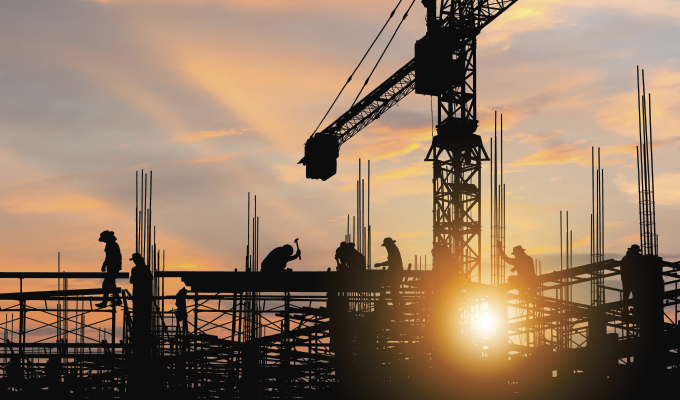It’s absolutely vital for a construction team to determine how to mitigate or prevent the disruption work will have on adjoining areas or sections of a building.
Considerations taken into account include noise, dust, vibration, and numerous other potential factors that could impede normal operations at a client’s worksite. The techniques that power the road to success? Planning. Collaboration. Communication up front. And simple, genuine professional courtesy and respect.
Mitigation measures can vary widely. When renovating or expanding an area in a busy location accustomed to activity, such as an airport terminal, a well-built temporary wall to contain dust and block out some noise may address most potential problems.
But much more extensive measures are required when construction companies build and renovate areas in and around highly sensitive operations such as hospitals, laboratories, schools and companies where disruptions could cause health risks or cost millions of dollars. These sites require protection from dust, noise, vibration, power loss, or surges and temperature changes.
UNIQUE SITUATIONS
Each project is unique. It is essential to understand the risks and vulnerabilities of the adjacent spaces that will be used by the public or professionals, and how construction activities could impact these areas. It is also important to understand traffic on the neighboring streets to coordinate deliveries and arrival of heavy equipment at times when they will cause less disruption.
The construction methods must be sound enough, and the crews skilled and adaptable enough, for the work to proceed near areas where life-saving medical care is being given, where scientists are working on valuable research products, or even in situations where essential technology might be affected by vibrations or noise.
A solution may be as straightforward as collaborating on schedules. For example, one LeChase team working above surgical suites devised a split shift—starting early, suspending work for several hours while medical teams performed operations, then resuming construction later in the afternoon.
TECH SOLUTIONS
Other times, technology must be deployed to ensure that construction proceeds efficiently without disrupting activities or revenue streams. On one project for a financial institution, crews worked near day-traders whose jobs rely on rapid-fire information and instantaneous decisions. On another job, crews worked near computer servers hosting many millions of dollars’ worth of data. The smallest impact to these operations could have had significant, widespread repercussions. In both cases, LeChase safeguarded the surrounding activities with surge protectors and highly sensitive monitors that detect vibrations. Sensors also are available that monitor decibels and temperature changes, automated to alert crews when they approach the limits of acceptable levels.
For control of particulates, a construction area can be sealed off with airtight temporary walls that hold in dust and dampen noise—and which give the appearance of permanent walls. HEPA filters can scrub the air and create a negative air pressure so that when a crew member leaves or enters a site, air containing dust and other contaminants is pulled in, trapped and safely routed, rather than escaping.
TRAINING
LeChase teaches many of these strategies at its Infection Control Risk Assessment (ICRA) Center that opened in 2021 in its New York Metro office in Armonk, N.Y. The center trains employees in the use of sound-reducing walls, filters, negative air pressure, and sticky mats that remove dust and particles from boots as workers leave or enter the construction space. Employees are also trained on best practices for the construction of separation walls and ante rooms, as well as proper monitoring and documentation procedures.
Technology continues to advance, producing ever more sophisticated equipment. But whatever equipment and methods are employed, the most important element of an effective disruption-avoidance plan is an alert, highly skilled crew that understands the importance of safeguarding a site’s surroundings. When working near areas used by the public or professionals, construction crews must be familiar with the plan and constantly aware of the impacts their work has on the surroundings. It’s just the right thing to do.

Steve Corletta is regional operations manager for LeChase Construction Services. For more, visit www.lechase.com.


